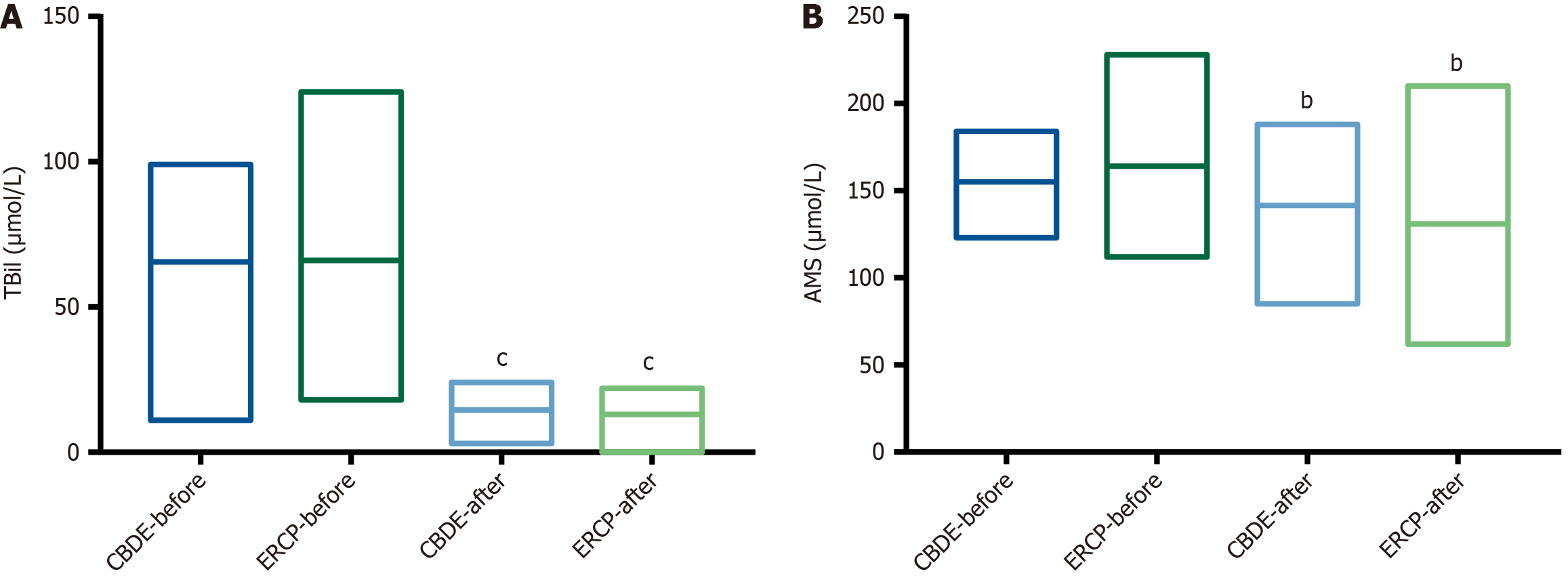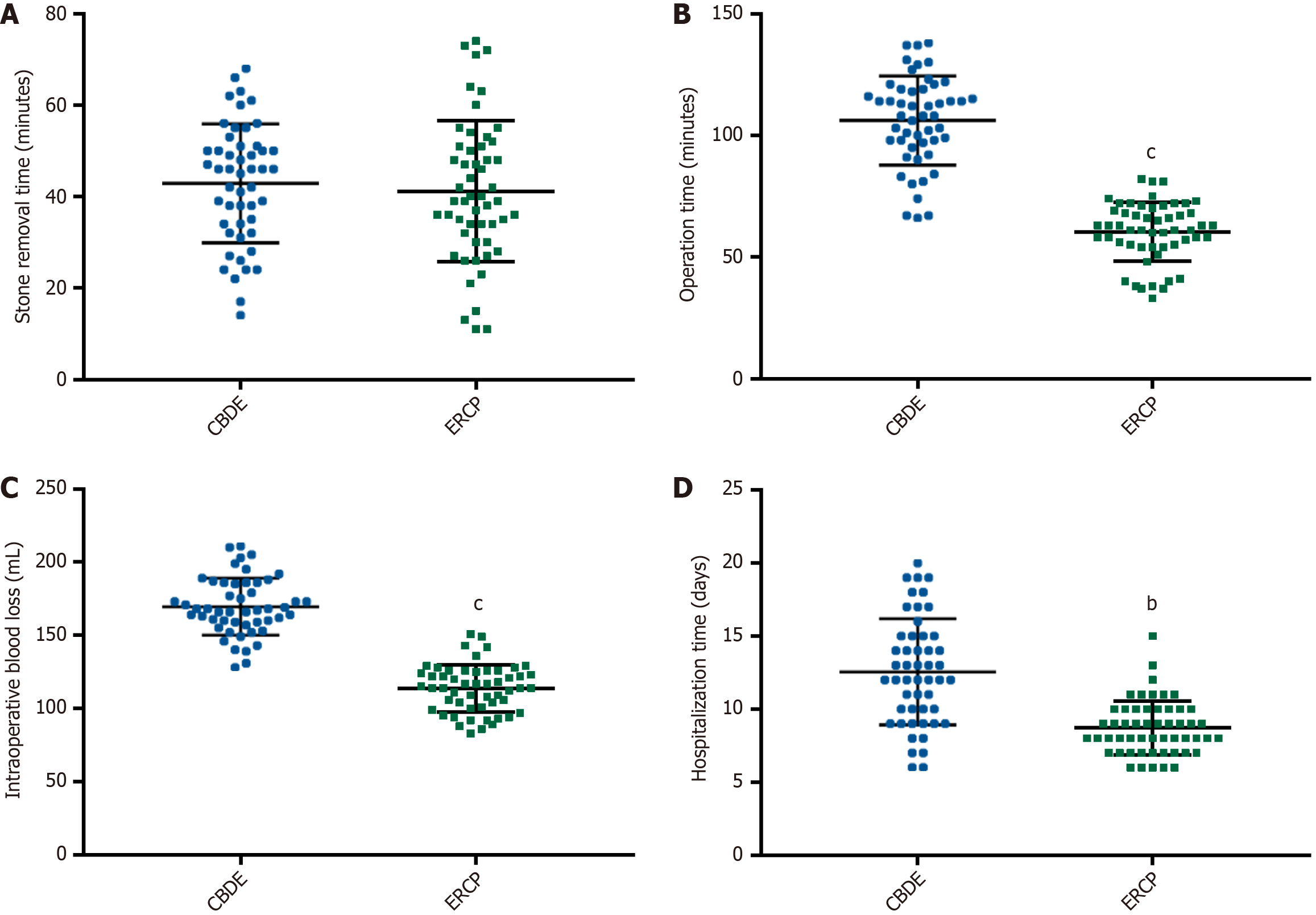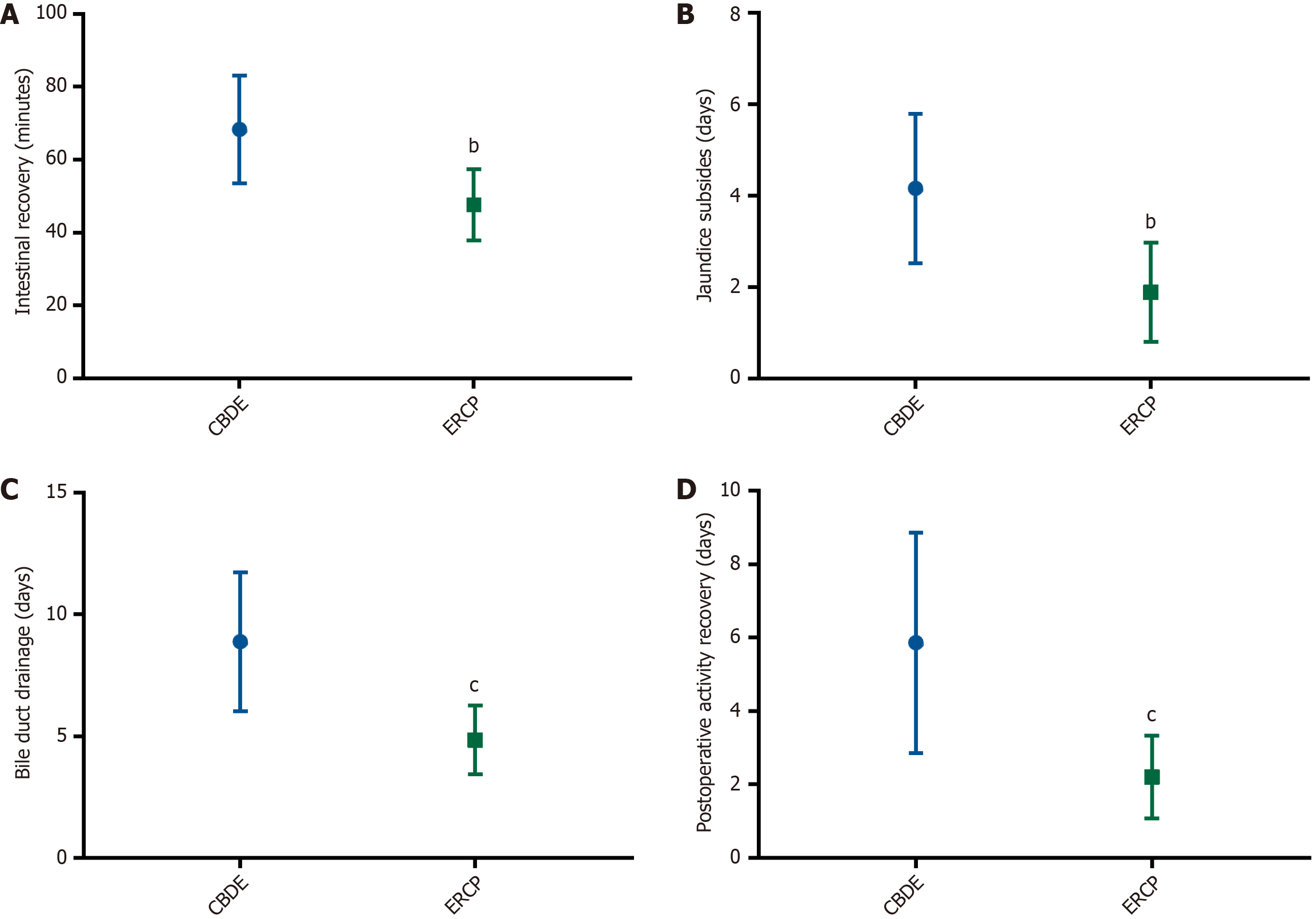Copyright
©The Author(s) 2025.
World J Gastrointest Surg. Sep 27, 2025; 17(9): 109270
Published online Sep 27, 2025. doi: 10.4240/wjgs.v17.i9.109270
Published online Sep 27, 2025. doi: 10.4240/wjgs.v17.i9.109270
Figure 1 Changes in total bilirubin and amylase levels before and after treatment.
A: Total bilirubin levels pre- and post-treatment; B: Amylase levels pre- and post-treatment. TBil: Total bilirubin; AMS: Amylase; CBDE: Common bile duct exploration; ERCP: Endoscopic retrograde cholangiopancreatography. cP < 0.001 vs pretreatment values, bP < 0.01 vs pretreatment values.
Figure 2 Surgery-related indicators in two groups.
A: Stone removal time; B: Operation time; C: Intraoperative blood loss; D: Hospitalization time. CBDE: Common bile duct exploration; ERCP: Endoscopic retrograde cholangiopancreatography. cP < 0.001 vs common bile duct exploration group, bP < 0.01 vs common bile duct exploration group.
Figure 3 Postoperative recovery in two groups.
A: Intestinal recovery time; B: Time to jaundice resolution; C: Time to biliary drainage removal; D: Time to postoperative activity recovery. CBDE: Common bile duct exploration; ERCP: Endoscopic retrograde cholangiopancreatography. cP < 0.001 vs common bile duct exploration group, bP < 0.01 vs common bile duct exploration group.
- Citation: Gong DF, Cheng L. Efficacy and safety of endoscopic retrograde cholangiopancreatography in the treatment of bile duct stones. World J Gastrointest Surg 2025; 17(9): 109270
- URL: https://www.wjgnet.com/1948-9366/full/v17/i9/109270.htm
- DOI: https://dx.doi.org/10.4240/wjgs.v17.i9.109270















